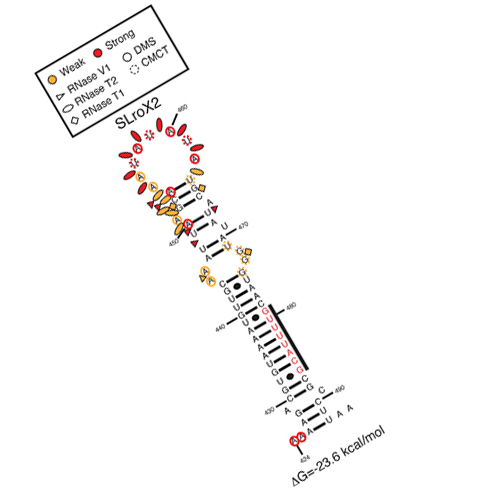ATP-Dependent roX RNA Remodeling by the Helicase maleless Enables Specific Association of MSL Proteins
25-Jul-2013
Molecular Cell, 2013, doi: 10.1016/j.molcel.2013.06.011, Volume 51, Issue 2, 174-18, published on 25.07.2013
Molecular Cell, online article
Molecular Cell, online article
Dosage compensation in Drosophila involves a global activation of genes on the male X chromosome. The activating complex (MSL-DCC) consists of male-specific-lethal (MSL) proteins and two long, noncoding roX RNAs. The roX RNAs are essential for X-chromosomal targeting, but their contributions to MSL-DCC structure and function are enigmatic. Conceivably, the RNA helicase MLE, itself an MSL subunit, is actively involved in incorporating roX into functional DCC. We determined the secondary structure of roX2 and mapped specific interaction sites for MLE in vitro. Upon addition of ATP, MLE disrupted a functionally important stem loop in roX2. This RNA remodeling enhanced specific ATP-dependent association of MSL2, the core subunit of the MSL-DCC, providing a link between roX and MSL subunits. Probing the conformation of roX in vivo revealed a remodeled stem loop in chromatin-bound roX2. The active remodeling of a stable secondary structure by MLE may constitute a rate-limiting step for MSL-DCC assembly.











